Connecting the dots: How derived relations unlocks complex connections in your knowledge graph

In your data, the most critical relationships are often the ones you can't see. While traditional, point-to-point lineage shows the obvious, it leaves you blind to the deeper, "multi-hop" connections that reveal the true context of your data. This is where the ability to see beyond direct connections becomes a game-changer.
What’s new: Derived relations
Organizations invest significant effort in building a comprehensive knowledge graph within their governance platform. However, when searching for critical context, users often encounter relationships that are not direct but exist multiple hops away.
Derived relations is designed to solve the complexity of navigating indirect relationships and make the knowledge graph actionable across the Collibra Platform. Users can now customize these crucial relationships directly, providing more flexibility than the pre-defined "prescriptive paths". Derived relations represent the next evolution of querying the knowledge graph, giving control over these complex relationships directly to the user.
How derived relations helps
Previously, users needed to rely on diagrams or click through many pages to see how an asset is connected to others, making it hard to understand how they impact each other. Now with derived relations, users can define new types of relations that connect assets across multiple hops or indirect relationships in the knowledge graph. Derived relations helps solve for:
- Difficulty visualizing indirect relationships: Easily visualize and understand complex, multi-hop relationships within your knowledge graph, eliminating the challenge of indirect data connections
- Inefficient data discovery: Derived relations eliminate manual navigation of asset pages, displaying condensed, critical information from distant assets through new widgets
- Reliance on cumbersome workflows: Streamline relation management by automating direct relation creation and attribute value copying, removing the need for cumbersome, inefficient manual processes
How derived relations works
Derived relations function as configurable pathways that are designed to connect assets across multiple hops or indirect relationships within the Collibra knowledge graph.
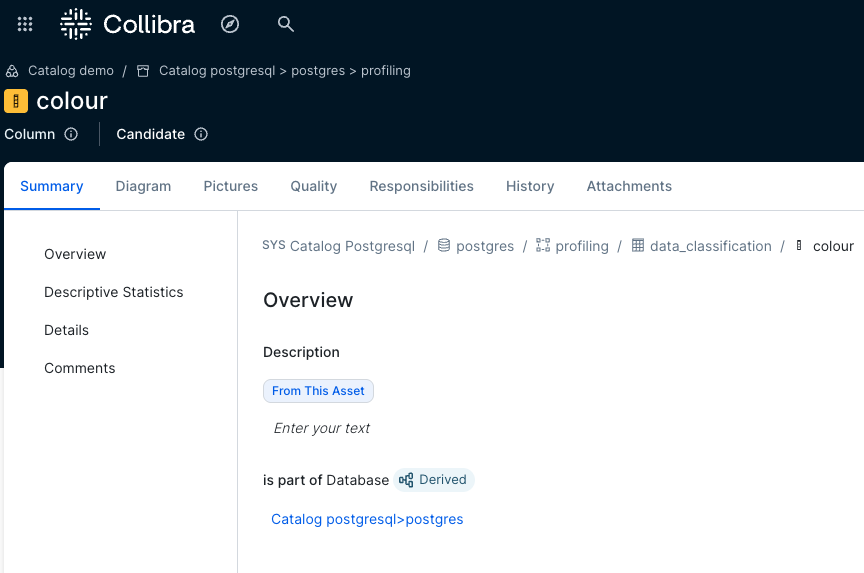
A simple derived relation that tells which database a Column belongs to
The process begins when the Collibra administrator registers a new derived relation type within the Collibra Platform Settings. Defining a derived relation type requires specifying several core elements:
1. Head asset type: Defines the source of the relation path
2. Tail asset type: Defines the target of the relation path
3. Role and co-role: These define the names of the relation when traversing from head to tail (role) and from tail to head (co-role), respectively, similar to existing explicit relation types
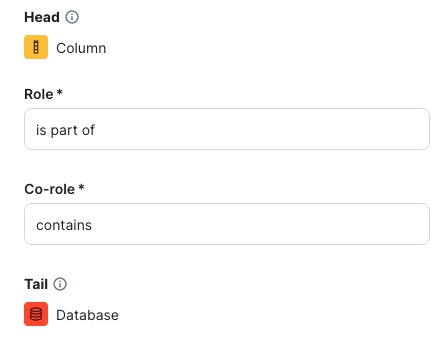
Defining a derived relation type
After creating the definition, the user is redirected to the path creation page. Here, you can specify the set of connected direct or derived relations that define the journey from the head asset to the tail asset. The path can fork and rejoin as long as all possible sub-paths eventually lead to the tail asset type.
To ensure a derived relation type appears on an asset page, it must be added to an asset type assignment.
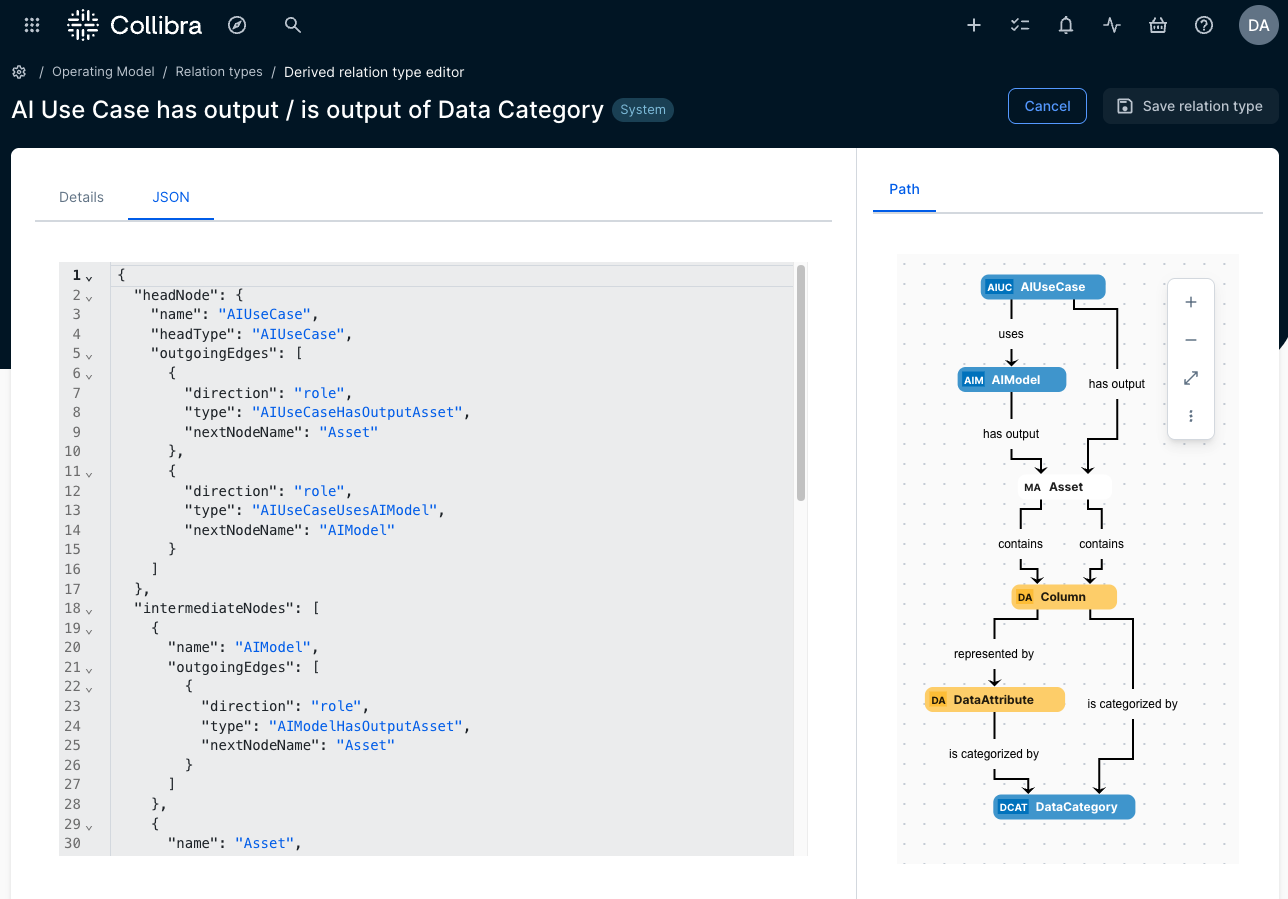
Defining the relation path
The goal of the derived relations mechanism is to improve the experience for data citizens by surfacing distant data directly on the asset page. When a derived relation type or derived attribute type is assigned to an asset type, a corresponding widget is automatically added to the asset page. When a user views the asset page, the widget automatically queries the graph to find all assets located at the end of the relation path.
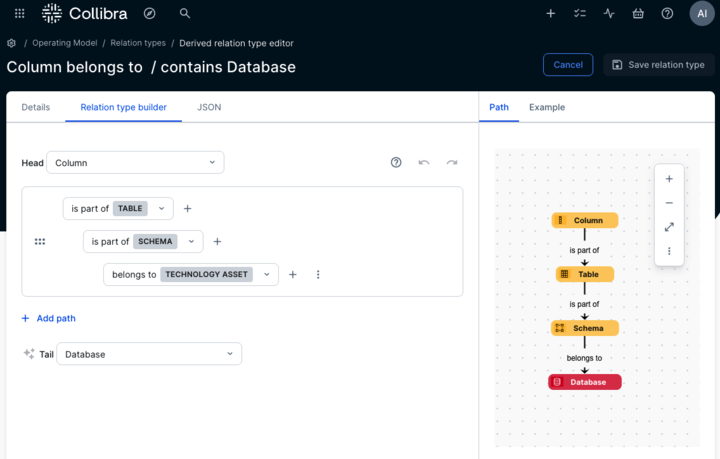
Derived relation type editor
Why you should be excited
Derived relations offer significant advantages for both Operating Model Administrators and data citizens, enhancing how they interact with and understand their knowledge graph.
- Operating Model Administrators: Ability to define new, customized relation types to connect asset types across multiple hops or indirect relationships. This enables better business lineage and technical lineage visualization and analysis on a single asset page
- Data citizens (Analysts, Business Users, Data Scientists): Users can consume condensed information that is normally separated by multiple relations, viewing it directly on a single asset page without having to click around. The Derived Relation Widget automatically queries the graph and displays assets found at the end of the defined path. This allows users to easily view and understand lineage between critical assets and their metadata, even if they are difficult to trace
Derived relations offers significant value through these key technical use cases:
- Tracing policy compliance: The Derived Relation Widget automatically queries the graph and displays distant assets, allowing users like a data scientist to see a column’s connection to a "Sensitive data handling" policy they must comply with
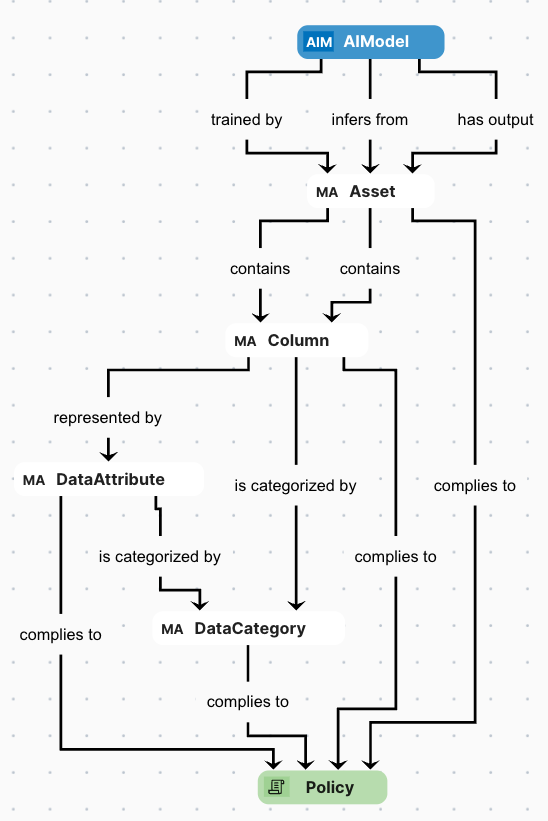
An optimized out-of-the-box derived relation type
- Automated traceability for AI assets: Derived relations automatically establishes traceability between AI use cases or AI models and relevant governance assets, even when those connections are multiple relations away

Relation path that displays assets located multiple relations away from an asset of interest
Key takeaways about derived relations
Ultimately, the power of derived relations lies in its ability to automatically connect the dots across your data landscape. By visualizing and analyzing these previously hidden, multi-hop relationships, you can now see the full context of your data assets in one place. This not only accelerates data discovery and understanding for your users but also provides the deep visibility needed to govern a complex data ecosystem with confidence.
Join Collibra’s Product Premiere to:
- Discover what's new in our October platform release
- Learn how our new derived relations capability helps you see the bigger data picture by exposing previously hidden connections
- See derived relations in action
Where to learn more about derived relations
Sign up now for our private preview to get an early look at this new capability.
Keep up with the latest from Collibra
I would like to get updates about the latest Collibra content, events and more.
Thanks for signing up
You'll begin receiving educational materials and invitations to network with our community soon.


